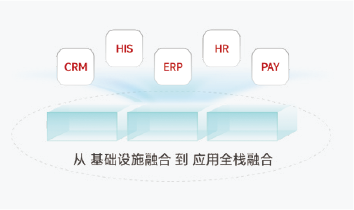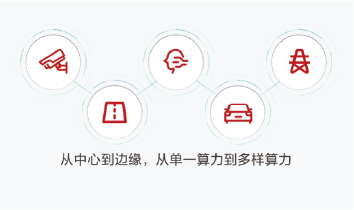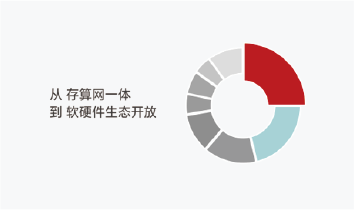Source: FusionCube super-converged infrastructure 2024 special issue
background
15-20 years ago, the IT architecture was very simple and stable, so the hierarchical procurement mode was able to select the best manufacturer at each level to cooperate to the greatest extent. With the development of digitalization, more and more new IT technologies have emerged, and more and more IT manufacturers have emerged at the same time, which makes IT more and more difficult to connect devices. Users begin to consider letting a manufacturer provide a set of pre-integrated devices, minimize delivery and O & M risks.
At this time, the integration infrastructure of CI architecture appeared, and equipment manufacturers put three IT components into a large cabinet one after another, pre-installed at the factory and delivered the whole cabinet, which largely solved the problem of complexity of integration between devices. However, in this architecture, resources still need to be independently planned, and devices still need to be maintained one by one. Therefore, the complexity of O & M management is not reduced. In order to split IT resources into pools and simplify the operation and maintenance management of resources, HCI, the hyper-fusion architecture, came into being. It manages storage, computing, and network resources distributed on each device node in a unified manner, builds a resource pool, and maximizes resource utilization efficiency. At the same time, it implements intelligent O & M and management of resources through a unified platform.
According to the survey of analysts such as IDC, the hyper-integration construction mode has been recognized by a wide range of enterprise builders and has become one of the current mainstream construction modes.

Facing the future, hyper-integration faces three challenges
1. Rapid deployment of business applications
when building an IT system, in addition to the IT infrastructure, PaaS, SaaS, middleware, and applications must be built. In the future, the system must be maintained continuously, and the skill reserve requirements for engineers are also very high. On average, each enterprise deploys hundreds of applications. Due to insufficient collaboration between applications and IT infrastructure, business opening cannot be simple and agile.

2. Agile adaptation in various scenarios
as 75% of the data is generated at the edge and 50% of the data needs to be processed at the edge, the configuration of storage and computing power can be more flexible. The environment in the edge scenario is generally complex, and you need to consider how to maintain efficient and reliable operation of the device without a professional data center.

3. Flexible choice of cooperation mode
the original inherent super-converged vendors are basically integrated with the storage and computing network, and the top 3 vendors account for more than half of the market share. What users expect is that they can enjoy the product capabilities of the head manufacturers, but they hope that the supply of products and services is diversified. How to help industry partners create better super-integrated products, giving users more choices is an urgent problem to be solved.

In order to meet the above challenges, Huawei adheres to the concept of "leaving complexity to itself and simplicity to partners and customers" and proposes "super integration"+"Strategy, comprehensively upgrade the traditional hyper-integration around the three dimensions of ecology, experience and commerce.
1. Ecology:
in terms of ecology, Huawei has joined hands with its partners to build a one-stop integration platform for IT application solutions-Huawei blue whale application Mall, which is committed to making IT as simple as using mobile apps for its partners and customers, to achieve fast online and stable operation of the business system. In addition, Huawei's "super integration +" will fully embrace a variety of computing power ecosystems to meet the demand for diversified computing power in complex business scenarios.
2. Experience:
in terms of experience, Huawei has introduced dedicated hardware for branch edges, which is enhanced in aspects such as mains supply access, noise control, and wide temperature adaptation to adapt to the complex environment of edge scenes. At the same time, Huawei "super integration +" provides a full-service process automation tool, which supports "one-click" device initialization, business launch and operation and maintenance management to improve user experience.
3. Business:
in terms of business, Huawei's "super integration +" has fully opened up its software capabilities, providing partners with three types of technical support: quality certification mechanism, hardware acceleration module and delivery of O & M tools, reduce the difficulty for partners to develop hyper-converged products. Huawei will also open its hardware platform. Huawei will build a storage base and hand over the choice of computing components to its partners to help them build a complete computing storage product "building blocks" to realize technology sharing and capability intercommunication.


 Reprint
Reprint 